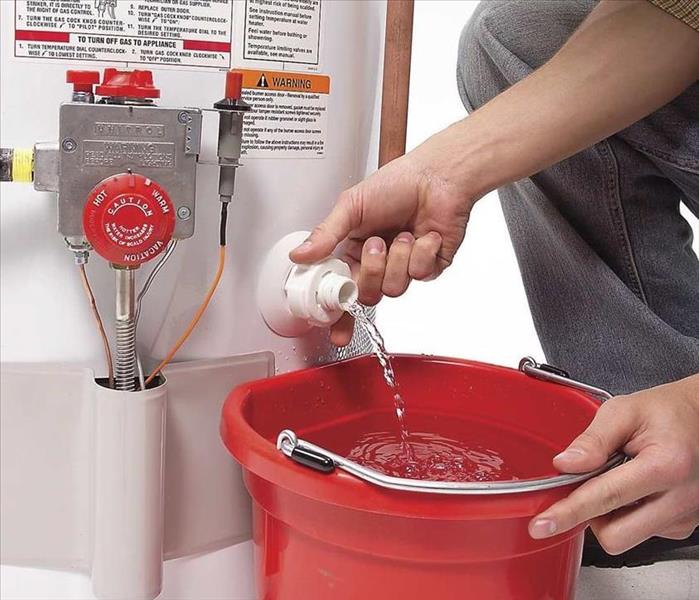SERVPRO of Santa Cruz: Maintaining Your Hot Water Heater
4/16/2021 (Permalink)
A typical hot water heater can have a lifespan of around ten years without any upkeep, which could be why they’re so easy for a Homeowner to overlook. Spending a few moments once a year to complete some basic preventative maintenance to your water heater can not only optimize the tank’s functionality, but can also help you avoid a future water damage at your property.
When Should You Maintain Your Water Heater?
Completing an annual basic water heater servicing should become your new norm. We suggest timing your maintenance during the Spring or Fall seasons, which are typical times of the year when your water heater isn’t being used as much.
How to Maintain Your Water Heater
It is not necessary to hire a professional to complete an annual servicing and maintenance check to your water heater – many homeowners can complete these simple tasks with a screwdriver and a bucket!
To ensure safety, the first step should be to turn the power off for electrical heaters by switching the breaker off, or turn off the gas supply for gas heaters by turning the pilot knob to the off position.
Next, flush the tank! Sediments collect within water heater tanks and can cause rusting and corrosion. Please note, the excreted water may be very hot so it is vital to take precautions to avoid burning yourself. Locate the drain valve near the bottom of the tank and place your bucket underneath the valve. Turning the valve to the left should open the valve and release water into the bucket. Continue draining until your water runs sediment free. If you are experiencing difficulties maneuvering the valve, it is best to contact a plumber for maintenance to avoid damage.
Additionally, you should test the temperature and pressure relief valve. Each water heater has this safety feature to resolve dangerous buildup or temperatures. A failed T&P valve that does not relieve the tank’s pressure could result in explosion. First, locate the valve which could be in the side wall or at the top of the unit. You will see a discharge tube connected that extends to the base. Place a bucket under the discharge tube connected to the T&P valve. Manually lift the valve lever to release the hot water into the bucket through the discharge tube (caution: water will be scolding!). After allowing the water to flow for a few seconds, releasing the lever should result in the lever setting back into place and the water to stop running. If the valve does not release water or continues to leak once the valve snaps back into place, the valve is faulty and must be replaced.
What To Do When Your Water Heater is Leaking
Unfortunately, water heaters can and do fail over time. If you have experienced a water heater leak, call SERVPRO of Santa Cruz as soon as possible to assist in minimizing property damage. Our crews are ready day or night, 365 days a year.
SERVPRO of Santa Cruz (831) 457-1997

 24/7 Emergency Service
24/7 Emergency Service
